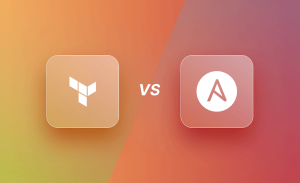Programming is the process of designing, writing, testing, and maintaining software programs or applications using a programming language. A programming language is a set of rules that define how a computer program can be written and executed.
Programming has numerous uses in various fields and industries, including:
- Software Development: Programming is primarily used for developing software applications for various platforms like desktop, mobile, web, or embedded systems. It involves writing code using programming languages such as C++, Java, Python, JavaScript, and many others.
- Automation: Programming can be used to automate repetitive tasks or processes, such as batch processing, data entry, or report generation. This can save a lot of time and effort for businesses.
- Data Analysis: Programming can be used to analyze and manipulate data in various ways. With programming languages such as R and Python, data scientists can develop models and algorithms to extract insights from large datasets.
- Game Development: Programming is a key component in developing video games. Game developers use programming languages to create game engines, game mechanics, and user interfaces.
- Robotics: Programming is essential in the field of robotics. Robots require programming to control their movements, sensors, and decision-making capabilities.
- Artificial Intelligence: Programming is a key technology in the field of artificial intelligence. AI systems require programming to develop algorithms, models, and frameworks to process and analyze data, and make decisions.
- Web Development: Programming is used in creating websites and web applications. It involves writing code using web development languages such as HTML, CSS, and JavaScript.
Overall, programming is a crucial skill in today’s digital age. It can help individuals and businesses solve complex problems, automate processes, and develop innovative solutions.

Types of programming languages?
Programming languages can be broadly categorized into the following types:
- Procedural Programming Languages: In procedural programming languages, the program is structured as a sequence of steps or procedures that are executed in order. Examples of procedural languages include C, Pascal, and Fortran.
- Object-Oriented Programming Languages: In object-oriented programming languages, the program is structured around objects that represent real-world entities. Examples of object-oriented languages include Java, Python, and C++.
- Functional Programming Languages: In functional programming languages, the program is structured around functions that take input and produce output without side effects. Examples of functional languages include Haskell, Lisp, and Clojure.
- Scripting Programming Languages: Scripting languages are used to write scripts or small programs that automate simple tasks. Examples of scripting languages include JavaScript, Python, and Ruby.
- Markup Languages: Markup languages are used to define and format text-based documents. Examples of markup languages include HTML, XML, and LaTeX.
- Query Languages: Query languages are used to interact with databases and retrieve data from them. Examples of query languages include SQL, LINQ, and XQuery.
- Low-level Programming Languages: Low-level languages are used to write code that is close to the hardware and can directly manipulate memory and other hardware resources. Examples of low-level languages include assembly language and machine language.
- Domain-Specific Languages: Domain-specific languages are designed for specific applications or domains and have specialized syntax and features. Examples of domain-specific languages include MATLAB for mathematical computing, R for statistical analysis, and VHDL for designing digital circuits.
There are many more programming languages than these, and new ones are constantly being developed to meet the needs of different applications and industries.






